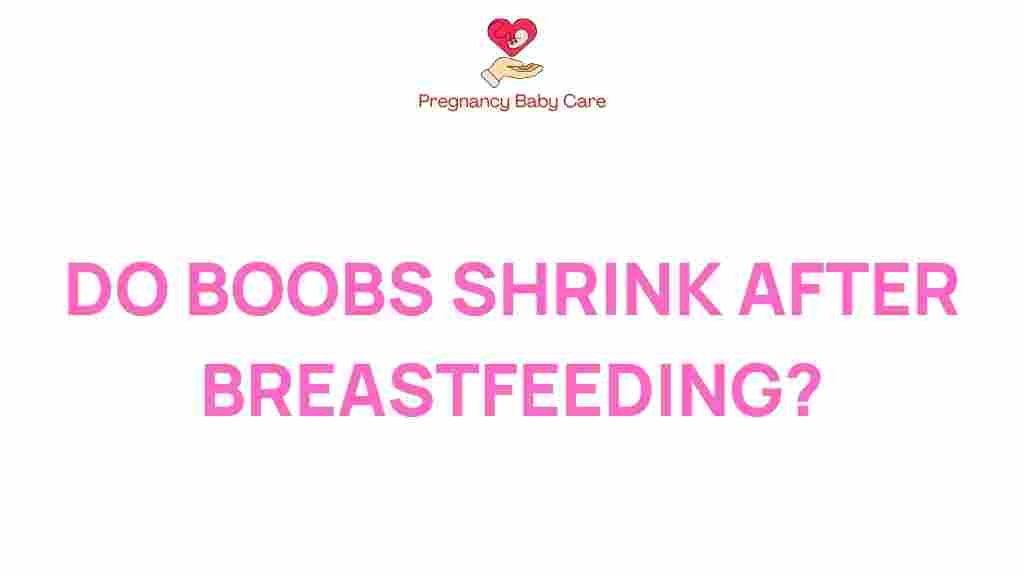Do Breasts Really Shrink After Breastfeeding?
Breastfeeding is a natural and beautiful part of motherhood, providing essential nutrition to infants while promoting bonding between mother and child. However, many new mothers are concerned about the physical changes that occur during and after lactation, particularly regarding breast size. In this article, we will explore the truth about whether breasts shrink after breastfeeding, delving into postpartum changes, body image, and overall breast health.
Understanding Breast Anatomy and Lactation
To comprehend the effects of breastfeeding on breast size, it’s crucial to understand breast anatomy and the process of lactation. The breasts are composed of glandular tissue, connective tissue, and fat. During pregnancy, hormonal changes prepare the breasts for milk production, leading to an increase in size and fullness. This is often perceived as a positive change by many women.
Postpartum Changes in Breast Size
After childbirth, the body undergoes numerous changes, including hormonal fluctuations, which can impact breast size and shape. Here’s what typically happens:
- Initial Enlargement: During breastfeeding, breasts can become larger due to increased blood flow and milk production.
- Post-Weaning Size: After weaning, many women notice a reduction in breast size. This can be attributed to the decrease in glandular tissue and milk production.
- Fat Redistribution: Over time, fat may redistribute, leading to a potential change in breast shape and size.
It’s important to note that while some women may experience a noticeable reduction in size, others may find that their breasts return to their pre-pregnancy size or even remain larger.
Factors Influencing Breast Size After Breastfeeding
Several factors can influence whether breasts shrink after breastfeeding:
- Genetics: Family history plays a significant role in determining breast size and shape.
- Age: As women age, breast tissue naturally changes due to hormonal shifts and the loss of elasticity.
- Body Weight: Weight fluctuations can impact breast size, as breasts contain a significant amount of fat.
- Duration of Nursing: Prolonged breastfeeding may lead to more significant changes in breast tissue.
The Psychological Aspect: Body Image and Maternal Health
Breastfeeding and the subsequent physical changes can significantly impact a woman’s body image and mental health. Many new mothers grapple with their self-image as they adjust to their postpartum bodies. Here are some common feelings associated with postpartum changes:
- Body Dissatisfaction: Some women may feel less attractive or confident due to changes in breast size.
- Acceptance: Others may embrace their new bodies, recognizing the strength and capability of their bodies during motherhood.
Maternal health involves not only physical health but also mental well-being. It’s essential for mothers to seek support and talk about their feelings regarding body image changes. Joining support groups or talking to healthcare professionals can help navigate these feelings.
Step-by-Step Process: Managing Changes After Breastfeeding
If you’re concerned about breast size changes after breastfeeding, here are some steps you can take to manage these changes:
- Consult a Healthcare Provider: Discuss your concerns with a healthcare professional who can provide personalized advice on breast health and postpartum changes.
- Practice Self-Care: Prioritize self-care routines that include healthy eating, regular exercise, and skincare to promote overall well-being.
- Consider Breast Support: Invest in a good quality bra that provides support and comfort to accommodate your changing body.
- Explore Options: If you’re dissatisfied with your breast size post-breastfeeding, explore options such as padded bras or consult with a plastic surgeon for procedures like breast augmentation or lift.
Troubleshooting Tips for Common Concerns
Here are some troubleshooting tips for common concerns related to breastfeeding, breast health, and body image:
- Uneven Breasts: It’s normal for one breast to be larger than the other. If this persists post-weaning, consult with a healthcare provider.
- Changing Sensitivity: Breast sensitivity can change after breastfeeding. If you experience pain or discomfort, seek medical advice.
- Skin Changes: Stretch marks and sagging skin can occur during and after pregnancy. Consider moisturizing and using creams designed to improve skin elasticity.
Embracing Your Body: Tips for Positive Body Image
Embracing your body after breastfeeding can be challenging, but it’s crucial for mental health. Here are some tips to help foster a positive body image:
- Focus on Functionality: Appreciate your body for its ability to nourish your baby and support you through motherhood.
- Dress for Confidence: Wear clothes that make you feel good and fit well, enhancing your natural beauty.
- Practice Affirmations: Use positive affirmations to reinforce a loving relationship with your body.
Conclusion
In conclusion, the question of whether breasts shrink after breastfeeding is nuanced and varies from woman to woman. While many do experience changes in size and shape due to hormonal fluctuations and the natural aging process, the extent of these changes can differ widely based on individual factors such as genetics, body weight, and the duration of breastfeeding.
It’s essential for new mothers to focus on their overall health and well-being, embracing the remarkable changes that occur during this transformative stage of life. By understanding the physical and psychological aspects of postpartum changes, women can foster a positive body image and prioritize their maternal health.
For further reading on maternal health and body image, visit this resource. If you need support, consider joining groups that focus on body positivity and motherhood.
Remember, every woman’s journey is unique, and the most important thing is to nurture your body and spirit as you navigate the beautiful path of motherhood.
This article is in the category Health and created by PregnancyBabyCare Team
